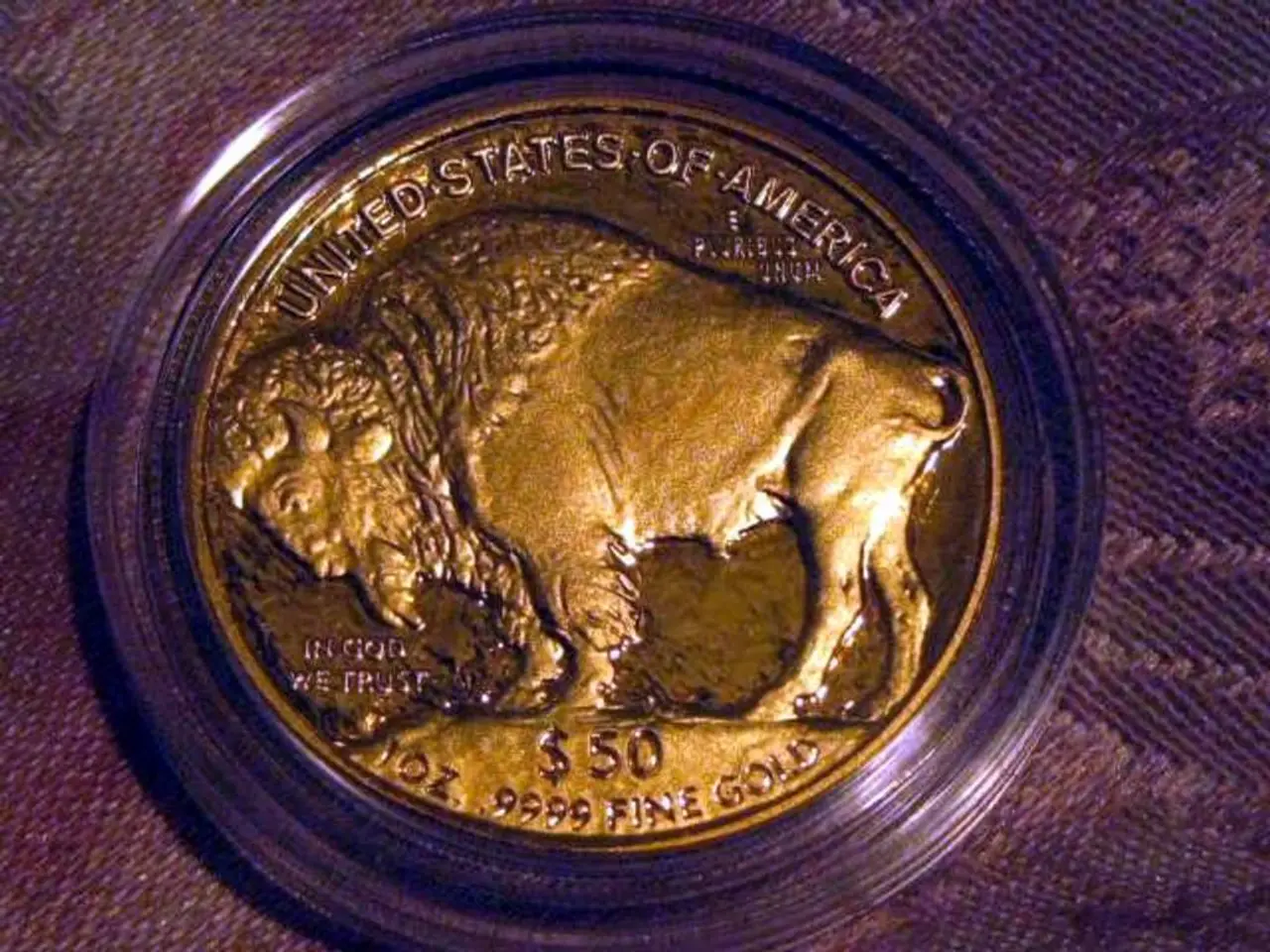Stock Market Decline Amid Increased Hope for Trade Agreements
===============================================================
In a series of significant developments, trade talks are shaping the global economic landscape. Here's a roundup of the latest news and their potential impacts on gold prices.
Trade Talks and Gold Prices
Treasury Secretary Scott Bessent is set to meet his Chinese counterparts in Stockholm next week for the third round of trade talks. Meanwhile, Iran has conceded to resume negotiations on its nuclear program due to EU sanctions, signaling a potential easing of geopolitical tensions. These developments, along with the conclusion of a framework agreement between US President Donald Trump and Japan, may have a moderate effect on gold prices. Analysts predict that safe-haven assets could face downward pressure as more U.S. trade agreements get signed, as these agreements reduce economic uncertainty and diminish gold's role as a safe-haven asset.
According to recent reports, the US-Japan/EU trade deals have resulted in a slight downward pressure on gold prices, with a decline of about 1.3% to around $3,387.67 per ounce. However, the overall environment remains complex, with other factors sustaining gold's price near historically elevated levels.
Gold Prices and the U.S. Dollar
The strengthening of the U.S. dollar, often accompanying positive news like trade agreements, has also put downward pressure on gold prices. A stronger dollar makes gold more expensive for foreign buyers, reducing demand and putting pressure on prices.
Long-term Outlook for Gold Prices
J.P. Morgan projects gold prices to rise further, with averages near $3,675/oz by late 2025 and potentially reaching $4,000/oz by mid-2026. This bullish outlook is due to persistent trade and tariff risks alongside recession concerns.
Other Economic Developments
In other news, the Philippines have struck a trade deal with the US. The Federal Reserve is unlikely to cut interest rates in the near future due to a stable job market and decent retail sales. Despite Trump's call for lowering interest rates by three points, the Fed Chair Jerome Powell remains steadfast.
The Mortgage Bankers Association's Index in the US increased to 255.50 points in the week ending on July 18. However, a report released by the National Association of Realtors showed existing home sales in the U.S. pulled back by more than expected in the month of June, slumping by 2.7% to an annual rate of 3.93 million.
Silver price edged down by 4.20 cents (or 0.11%) to $39.278 per troy ounce, while gold price fell on Wednesday, slumping by $45.10 (or 1.31%) to $3,394.10 per troy ounce.
In summary, while current trade deals are dampening gold prices by lowering geopolitical risks, the overall environment remains complex, with other factors sustaining gold's price near historically elevated levels. The long-term outlook for gold prices remains bullish, with J.P. Morgan projecting average prices near $3,675/oz by late 2025 and potentially reaching $4,000/oz by mid-2026.
In the current economic climate, business leaders might be keen on assessing the potential effects of ongoing trade talks on their finance portfolio, considering a moderate impact on gold prices might ensue due to reduced economic uncertainty. Moreover, analysts predict that the signing of more U.S. trade agreements may lead to a decrease in investments in safe-haven assets like gold.




